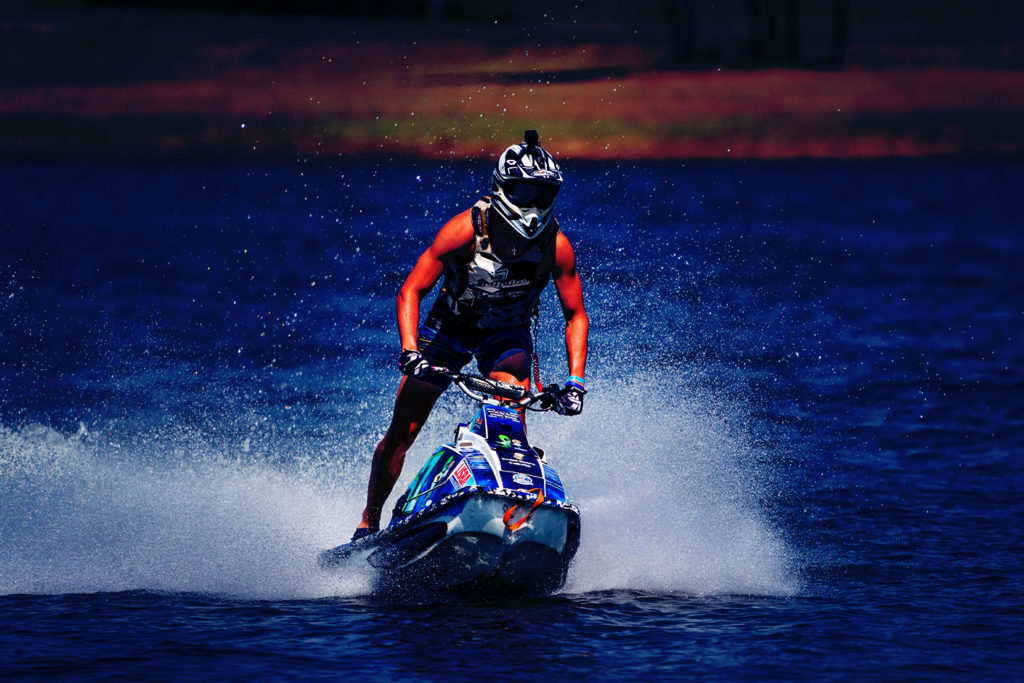Jet skis can flip over due to several reasons, primarily related to their design, handling characteristics, and rider behavior.
Here are some common reasons why jet skis can flip over…
- Sharp Turns at High Speeds
- Jet skis are designed for agility and can turn sharply, but making sudden, sharp turns at high speeds can cause the jet ski to tilt excessively and potentially flip over.
- Inexperienced riders or those unfamiliar with the handling characteristics of their jet ski may inadvertently turn too sharply, leading to a loss of balance.
- Riding in Rough Waters
- Choppy or rough waters can make a jet ski less stable.
- Waves and chop can impact the balance of the jet ski, making it easier for waves to catch the side of the hull and cause the jet ski to roll or flip over.
- Riders should adjust their speed and technique in rough conditions to maintain control and stability.
- Improper Weight Distribution
- Incorrect weight distribution, such as leaning too far to one side or having unevenly distributed weight on the jet ski, can affect its stability.
- Proper weight distribution is crucial for maintaining balance and preventing flips.
- Jumping or Wave Riding
- Performing jumps or riding waves can be thrilling, but it also carries a risk of flipping if not executed properly.
- Landing incorrectly after a jump or hitting a wave at the wrong angle can destabilize the jet ski and lead to a flip.
- Collisions or Obstacles
- Collisions with other watercraft, objects in the water, or submerged obstacles can cause a jet ski to flip over.
- It’s important to maintain awareness of surroundings and avoid hazardous areas.
- Mechanical Issues or Malfunctions
- While less common, mechanical issues such as steering failure or sudden loss of power can contribute to losing control and potentially flipping over.
Safety Tips to Prevent Flipping
- Practice Maneuvers – Learn and practice turning and maneuvering techniques at safe speeds.
- Know Your Limits – Avoid pushing the limits of your skill and the jet ski’s capabilities, especially in challenging conditions.
- Wear a Kill Switch – Always attach the kill switch lanyard to your wrist or life jacket. If you fall off, this will shut off the engine, preventing the jet ski from continuing on uncontrollably.
- Check Water Conditions – Be aware of water conditions and adjust your riding style accordingly.
- Take a Safety Course – Consider taking a boating safety course or a specific PWC safety course to improve your skills and knowledge.
By understanding these factors and practicing safe riding techniques, riders can minimize the risk of flipping a jet ski and enjoy a safer and more enjoyable experience on the water.



